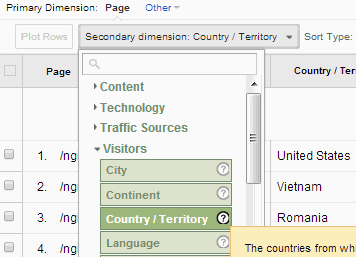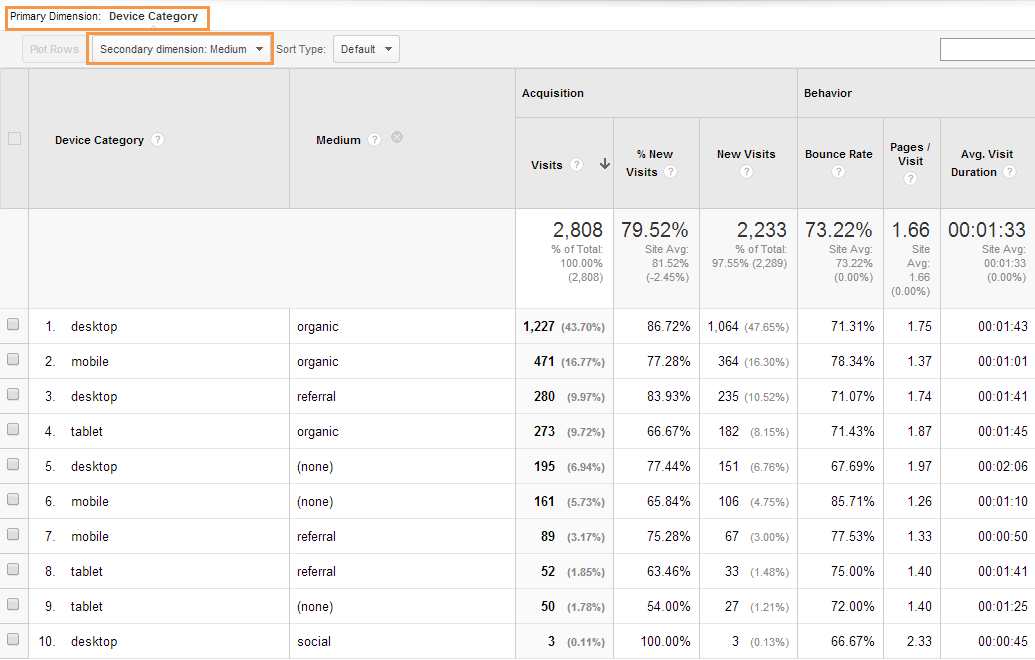Comprehensive Insights Utilizing Secondary Dimension in Google Analytics
Comprehensive Insights Utilizing Secondary Dimension in Google Analytics
Blog Article
Maximize Reporting Precision With Secondary Measurement in Google Analytics
Recognizing exactly how to maximize reporting precision with additional dimensions in Google Analytics can significantly boost the depth of insights derived from information evaluation. By including additional dimensions purposefully, marketers can discover surprise patterns and connections that might not be right away apparent when analyzing main metrics alone. This nuanced approach makes it possible for a much more thorough understanding of user habits and project performance, leading the way for even more targeted and efficient decision-making. The use of second dimensions holds the crucial to opening a wide range of useful info that can change the efficiency of digital advertising approaches.
Understanding Secondary Dimensions in Google Analytics
Second measurements allow users to section and additionally dissect information past the main dimension chosen. While the key dimension may present the overall number of page views, including a second dimension such as 'source/medium' can offer insights into where the web traffic stemmed from.
Moreover, understanding additional dimensions is crucial for creating a lot more tailored records customized to specific company objectives. By choosing the best combination of key and secondary measurements, analysts can reveal patterns, patterns, and connections that might otherwise remain hidden. This nuanced method to data evaluation encourages businesses to make enlightened choices based upon an extensive understanding of individual habits across different measurements.

Exactly How to Apply Additional Dimensions
When leveraging additional measurements in Google Analytics, the useful application entails picking particular data criteria to additional fine-tune insights beyond the primary dimension's scope. To apply secondary dimensions successfully, begin by accessing the record or dataset where you wish to delve much deeper into the information. Remember that secondary dimensions help provide context and granularity to your main dimension data, allowing you to extract even more workable and meaningful understandings from your Google Analytics records.
Leveraging Secondary Measurements for Insights
Using secondary measurements in Google Analytics enables for a much more thorough evaluation of information, supplying important insights beyond the main measurement's range. By leveraging secondary measurements, customers can dig deeper right into the efficiency metrics of their site or app, discovering surprise patterns and trends that may not be immediately noticeable when just considering main dimensions.
One secret benefit of using secondary dimensions is the capability to segment and filter data extra precisely. This can aid analysts and marketing experts better recognize the habits of specific individual sectors, such as new visitors versus returning visitors, or traffic originating from various geographic locations.
Furthermore, secondary measurements enable customers to contrast and contrast numerous information factors within the very same record, giving a much more holistic view of performance (Secondary Dimension in Google Analytics). For instance, coupling the main measurement of landing pages with second measurements like tools or demographics can disclose which web pages are most efficient in engaging users on different gadgets or from different demographic teams.
In essence, leveraging second measurements in Google Analytics equips customers to remove richer insights from their information, causing next even more informed decision-making and eventually, boosted efficiency.
Ideal Practices for Second Measurements
When assessing information in Google Analytics, incorporating second dimensions effectively boosts the depth of understandings stemmed from the primary metrics. To make one of the most out of additional dimensions, it is vital to comply with best methods that make sure meaningful and accurate coverage. To start with, it is essential to choose additional dimensions that line up with the primary statistics you are evaluating. Choosing pertinent additional dimensions assists in giving context and a more clear understanding of the information being analyzed.
In addition, it is advised to limit the variety of secondary dimensions made use of in a solitary report to avoid overwhelming the analysis with excessive information. Concentrating on a few key additional dimensions each time can cause even more concentrated and workable insights. Additionally, take into consideration trying out various mixes of secondary more info here and key dimensions to reveal one-of-a-kind fads and patterns that may not be obvious when looking at the data in seclusion.
Advanced Analysis Methods With Secondary Dimensions
Exploring elaborate data connections via the strategic application of secondary dimensions can reveal nuanced insights that boost the depth of evaluation in Google Analytics. By incorporating second dimensions with primary data collections, sophisticated analysis techniques can be employed to extract useful details. One such strategy is mate evaluation, where secondary measurements enable the segmentation of users into groups sharing common qualities. This technique allows a deeper understanding of individual behavior patterns with time, assisting in the recognition of patterns and the evaluation of like this advertising and marketing projects' performance.
Additionally, additional measurements can boost the evaluation of conversion paths by giving added context. Comprehending the numerous touchpoints an individual communicates with prior to transforming can be important in optimizing the customer trip - Secondary Dimension in Google Analytics. By using secondary dimensions to explore specifics such as web traffic resources or devices utilized, marketing professionals can tailor methods to target high-converting channels properly
Conclusion

To enhance data evaluation and gain deeper understandings into user actions, understanding secondary measurements in Google Analytics is important - Secondary Dimension in Google Analytics. Additional dimensions enable customers to segment and additionally explore information beyond the primary dimension chosen. While the main measurement may show the total number of page sights, including a second measurement such as 'source/medium' can provide insights into where the traffic originated from.When leveraging secondary dimensions in Google Analytics, the useful application entails picking specific data specifications to more fine-tune understandings past the main measurement's range. Bear in mind that secondary measurements aid supply context and granularity to your primary dimension data, allowing you to draw out more workable and significant insights from your Google Analytics reports
Report this page